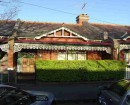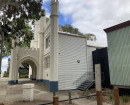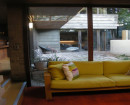OLA COHN HOUSE
41-43 GIPPS STREET EAST MELBOURNE, MELBOURNE CITY
-
Add to tour
You must log in to do that.
-
Share
-
Shortlist place
You must log in to do that.
- Download report
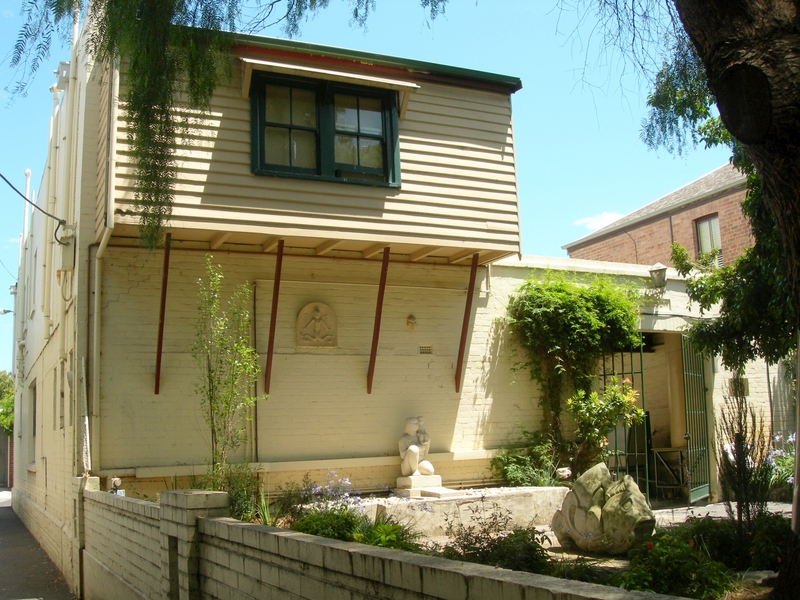

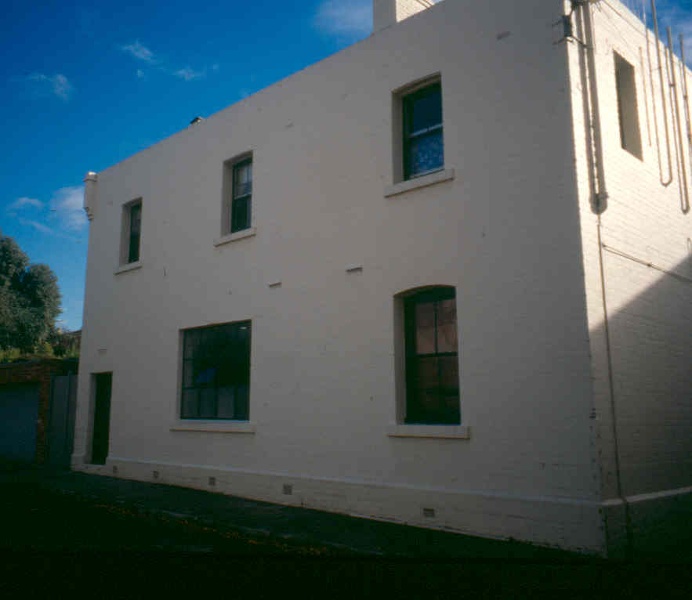

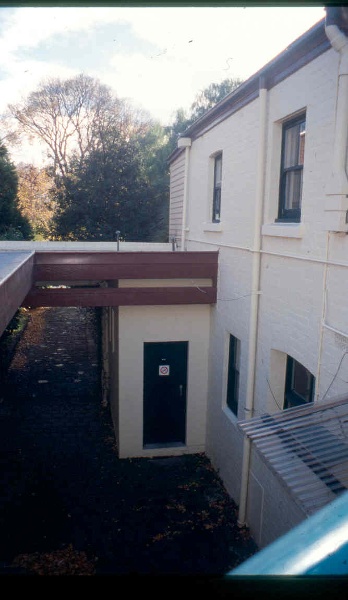

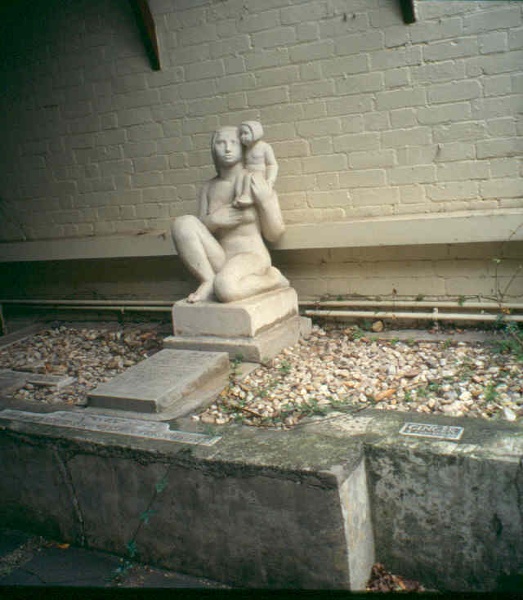
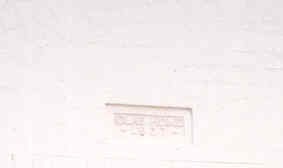

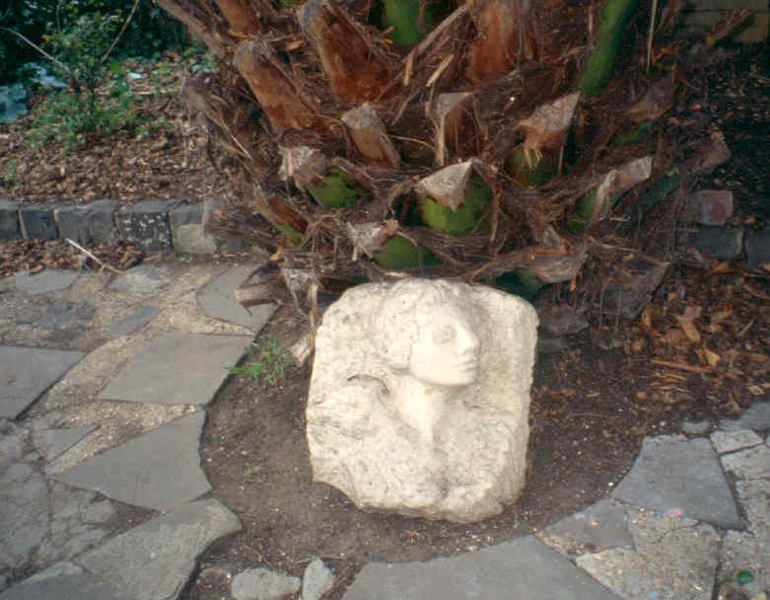
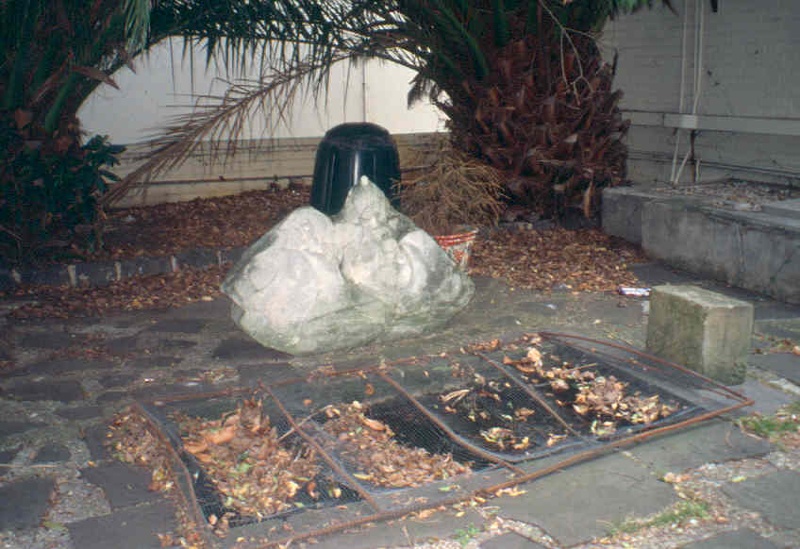
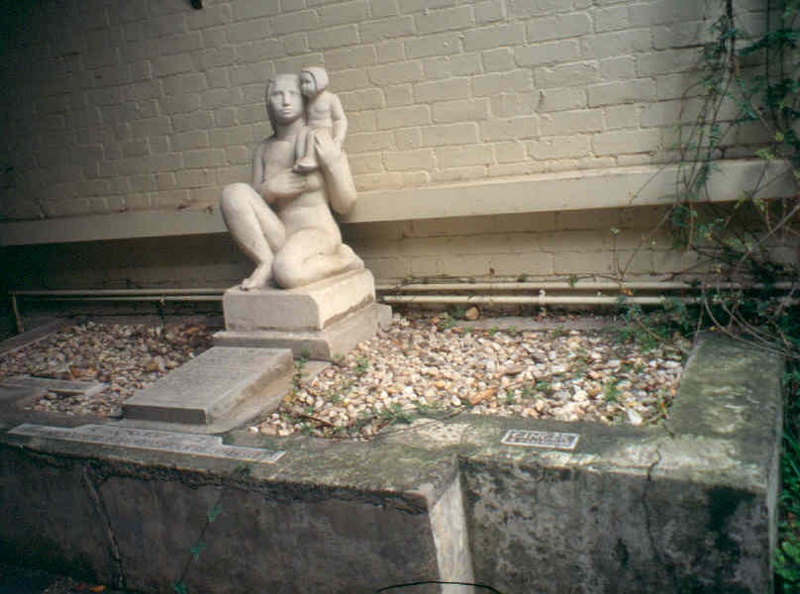
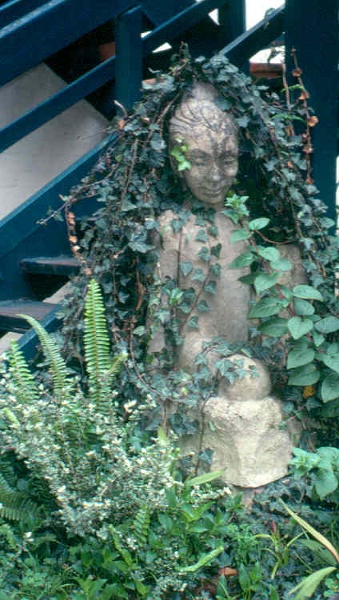

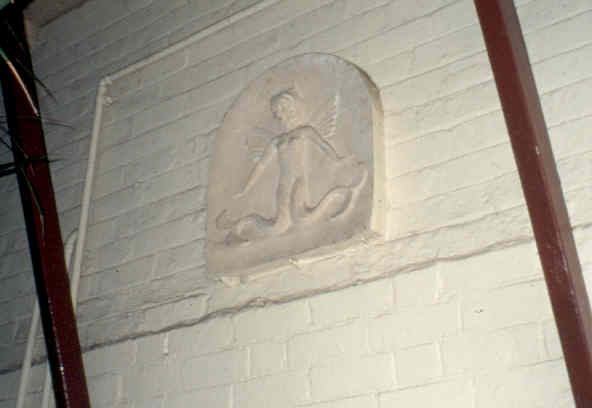
Statement of Significance
What is significant?
The Ola Cohn House was constructed in 1888 as livery stables but was converted in 1937 to a studio and residence for the sculptor Ola Cohn. The livery stables operated until the late 1920s when a motor garage began trading, with a petrol pump in what is now the front garden. During the conversion Cohn replaced the timber block floor of the stable with a timber floor. The building now consists of two self contained flats on the first floor accessed by an external timber staircase and a studio on the ground floor. A number of her sculptures are located in the front garden and her ashes are buried in a grave with a sculpture of a Mother Earth installed above, next to the front wall of the house. The garden also contains six other sculptures by Cohn, a fountain by Ian Bow and a fishpond. A bluestone paved driveway and courtyard and the feed bins date from the period of the livery stables. Cohn was born in Bendigo and trained overseas as a sculptor. In March 1931 her first solo exhibition established her as a leading modern sculptor in Australia. In 1938 she produced two figures in sandstone for the new Royal Hobart Hospital. She executed a series of nineteen panels for the Mutual Life and Citizens building in Sydney in 1939 and in 1940-41 carved the limestone Pioneer Women's Memorial in Adelaide. Cohn's early work from the early 1920s to the late 1940s was well regarded, though her later pieces were considered to be sentimentalised. She was one of the earliest exponents of modernism in sculpture in Melbourne when she returned from studying in London with Henry Moore in 1930. She was involved in early attempts to organise professional associations for Melbourne sculptors, the Sculptors Society in 1932 and the Plastic Group ion 1936. She was an active member of the Melbourne Society of Women Painters and Sculptors from the late 1940s to her death in 1964. She is best known for her carving of the Fairies Tree in the Fitzroy Gardens in 1931-34. Ola Cohn's wish to give support to women artists led her to bequeath her house to the Council of Adult Education, by the provision of a studio for a workplace and classroom. The house has been used as the Ola Cohn Centre and as a meeting place for the Melbourne Society of Women Painters and Sculptors since her death in 1964.
Changes to the place after Cohn's death included the construction of an additional toilet in 1968. The roof was renewed in 1971 and the bronze garden fountain installed in the same year. A bronze plaque was set in the garden edging near the fountain which reads: "This fountain recalls the lives and the work of Ola Cohn and Colin Badger by whose happy association and joint effort this house was preserved for posterity. Colin Cave Director. JW Wood Chairman Council of Adult Education. 1974."
How is it significant?
The Ola Cohn House is historically and socially important to the State of Victoria.
Why is it significant?
The Ola Cohn House is historically important for its origins as a livery stables constructed in 1888 to a design by Melbourne architect Charles d'Ebro. It was used as a livery stables from 1888 to 1925 and as a motor garage to 1936.
The Ola Cohn House is historically important for its association with the Victorian sculptor Ola Cohn (1892-1964), who was an early modern sculptor in Melbourne and was involved with most aspects of Melbourne's artistic movements in the mid- twentieth century, especially with the Melbourne Society of Women Painters and Sculptors.
The Ola Cohn House is socially significant as a centre for the encouragement of women's art in Victoria.
-
-
OLA COHN HOUSE - History
CONTEXTUAL HISTORY:
Ola Cohn (1892-1964)
Ola (Carola) Cohn was born in Bendigo in 1892. Her grandfather had come from Denmark with his brothers in the 1850s to mine gold and in 1857 established the Bendigo brewery, known as Cohn Bros Brewery. Ola was educated at Girton College, Bendigo , and then attended art classes at the Bendigo School of Mines from 1910-19. Here she was taught by Arthur T.Woodward and Mr Rowbotham. From 1920 to 1925 she studied at Swinburne Technical College Melbourne with J.R Tranthim-Fryer. She also attended the life classes held at the Victorian Artists’ Society and modelled and exhibited at their annual exhibition. (K. Scarlett Australian Sculpture (Melbourne, Nelson, 1980, p. 113-4) In 1926 she went to London and attended the Royal College of Art where her lecturers included Henry Moore for sculpture. She enrolled in night classes in bronze casting at the School of Arts and Crafts, studied Egyptian, Assyrian and ancient Greek sculpture at the British Museum and travelled in Europe. She also attended night classes in wood carving at the South Kensington School of Wood Carving. In 1928 she was awarded a Royal College of Art free studentship and in 1929 she became an associate of the Royal College of Art. (Australian Dictionary of Biography)She returned to Australia in December 1930 and set up a studio at 9 Collins Street. In 1933 she spent a brief period as an art teacher at Geelong Grammar School. From about 1940 to 1954 she was a part time lecturer at the Kindergarten Teachers’ College in Melbourne.
She claimed to be the first to introduce modernism in sculpture to Australia in her first exhibition in March 1931. She seemed to lose impetus towards the end of the war and her work failed to develop.
Ola Cohn is best known in Melbourne for her sculpture in the Fitzroy Gardens known as the Fairies’ Tree, carved between May 1931 and May 1934. This was a centenary gift to the children of Melbourne from the sculptor. Cohn carved the base of a dead red gum, which had been part of the reserve’s indigenous vegetation, with imps, fairies and Australian birds and animals. She had taken the idea from the Elfin Tree in Kensington Gardens, London., carved by Ivor Innis in the early 1920s. Her interpretation was a mixture of European folklore and Australian fauna. She wove stories around the tree in her children’s books. (Ola Cohn. The Fairies’ Tree (1932) and More about the Fairies’ Tree (1933)). In these books, she described the fairies who lived in the tree as running away after being frightened by a ‘Man who was ‘dark of face and strangely dressed, and he performed weird dances around the tree’. When the fairies returned hundreds of years later after white men had arrived, the tree had died of grief’. (Georgina Whitehead. Civilising the City. P. 79; S.Delander and R Buckingham. Ola Cohn’s Fairies Tree. Mullaya, Canterbury, 1972)
The centre has operated since her death under the administration of the Council of Adult Education, to which she bequeathed the property. Her establishment of the centre to encourage women’s artistic endeavours was important in the history of women artists in Victoria.
HISTORY OF PLACEThe building in Gipps Street East Melbourne was constructed in 1888 for William Taylor as a livery stables and coach house with living quarters. The architect was Charles d’Ebro. The building was used as Taylor’s livery stables from 1888 to 1912. The cab proprietor, John Page, of 59 Gipps Street, purchased the building and operated it as a livery stables from 1912 until his death in 1921. It was then leased by S. Taylor, also as a livery stables between 1922 and 1925. Between 1926 and 1929 it was a motor garage operated by S. Taylor with a petrol pump in the front garden. The place then reverted to a business known as John Page Cab.
Ola Cohn bought the property, then in a derelict state, in November 1936. She adapted the livery stables building to make a studio downstairs and living quarters upstairs. She replaced the wood block flooring on the ground floor with a timber floor.
The garden was designed by Ola Cohn’s sister Francizka Dut. The cypress and the palms predate Ola Cohn’s occupation. Sculptures by Cohn and others are in the garden. Cohn’s ashes were buried in the garden in 1964 and the burial place located against the north wall is marked by a sculpture of a woman and child and a gravestone reading:
“Ola Cohn MBE ARCA (Carola Green)
As she wished, her ashes are buried in this garden. MMCM 1966.” The initials MMcM on the gravestone are those of Marjorie McChesney Mathews.In 1968 the Council of Adult Education undertook some alterations to accommodate students, installing an exterior toilet and remodelling the kitchen downstairs.
In 1974 a bronze fountain by Ian Bow was set in the garden with a plaque reading: “This fountain recalls the lives of Ola Cohn and Colin Badger by whose happy association and joint effort this house was preserved for posterity. Colin Cave Director . J.W. Wood, Chairman, Council of Adult Education, 1974”.
The Melbourne Society of Women Painters and Sculptors
The Melbourne Society of Women Painters and Sculptors was founded in 1902 by eight former students of the National Gallery School, Melbourne. The idea was to form “a club of art students for the purpose of securing mutual help and sympathy in their work”. (Juliet Peers. More than Just Gumtrees: A Personal, Social and Artistic History of the Melbourne Society of Women Painters and Sculptors. Melbourne, 1993, p. 1) The women formed a sketching club, organised life classes and outdoor painting expeditions, to provide themselves with mutual educational opportunities before joining the Victorian Artists Society or undertaking solo exhibitions. Lectures by guest speakers and competitions on defined subjects, and discussions on work brought in for criticism were means of education for the members.
The members of the Melbourne Society of Women Painters and Sculptors included professional artists, as well as artists of ability who generally did not enter the public arena, and semi-amateurs. For over one hundred years, it has been an important source of education for women artists, giving them opportunities for group exhibitions.
The legacy of Ola Cohn has given the group limited access to the Ola Cohn Centre once a week for the last forty years. The Society has on the whole failed to attract many younger members and its future is uncertain unless the membership changes.
OLA COHN HOUSE - Permit Exemptions
General Exemptions:General exemptions apply to all places and objects included in the Victorian Heritage Register (VHR). General exemptions have been designed to allow everyday activities, maintenance and changes to your property, which don’t harm its cultural heritage significance, to proceed without the need to obtain approvals under the Heritage Act 2017.Places of worship: In some circumstances, you can alter a place of worship to accommodate religious practices without a permit, but you must notify the Executive Director of Heritage Victoria before you start the works or activities at least 20 business days before the works or activities are to commence.Subdivision/consolidation: Permit exemptions exist for some subdivisions and consolidations. If the subdivision or consolidation is in accordance with a planning permit granted under Part 4 of the Planning and Environment Act 1987 and the application for the planning permit was referred to the Executive Director of Heritage Victoria as a determining referral authority, a permit is not required.Specific exemptions may also apply to your registered place or object. If applicable, these are listed below. Specific exemptions are tailored to the conservation and management needs of an individual registered place or object and set out works and activities that are exempt from the requirements of a permit. Specific exemptions prevail if they conflict with general exemptions. Find out more about heritage permit exemptions here.Specific Exemptions:General Conditions: 1. All exempted alterations are to be planned and carried out in a manner which prevents damage to the fabric of the registered place or object. General Conditions: 2. Should it become apparent during further inspection or the carrying out of alterations that original or previously hidden or inaccessible details of the place or object are revealed which relate to the significance of the place or object, then the exemption covering such alteration shall cease and the Executive Director shall be notified as soon as possible. General Conditions: 3. If there is a conservation policy and plan approved by the Executive Director, all works shall be in accordance with it. General Conditions: 4. Nothing in this declaration prevents the Executive Director from amending or rescinding all or any of the permit exemptions. General Conditions: 5. Nothing in this declaration exempts owners or their agents from the responsibility to seek relevant planning or building permits from the responsible authority where applicable. Building Exterior:
* Minor repairs and maintenance which replace like with like.
* Painting of previously painted surfaces (but not signs), walls, posts, and roofing in the same colour.
* Treatments to stabilise and protect timber, masonry and metal structures.
* Removal of extraneous items such as air conditioners, pipework, ducting, wiring, antennae, aerials etc, and making good.
* Installation or repair of damp proofing by either injection method or grouted pocket method.
* Repair or replacement of fences and gates. Building Interior:
* Painting of previously painted walls and ceilings provided that preparation or painting does not remove evidence of the original paint or other decorative scheme.
* Removal of paint from originally unpainted masonry.
* Refurbishment of toilets including removal, installation or replacement of fixtures and piping
* Installation, removal or replacement of curtain track, rods, blinds and other window dressings.
* Installation, removal or replacement of hooks, nails and other devices for the hanging of mirrors, paintings and other wall mounted artworks.
* Removal of paint from originally unpainted or oiled joinery, doors, architraves and skirtings.
* Painting of previously painted walls and ceiling provided that preparation or painting does not remove evidence of the original painting or other decorative scheme.
* Installation, removal or replacement of carpets and flexible floor coverings.
* Installation, removal or replacement of ducted, hydronic or concealed radiant type heating provided that the installation does not damage existing skirtings and architraves and provided that the location of the heating unit is concealed from view.
* Installation, removal or replacement of kitchen benches, cupboards and fixtures including sinks, stoves, ovens refrigerators, dishwashers etc and associated plumbing and wiring, provided that the existing masonry structure of the building core remains in place.
* Refurbishment of existing bathrooms, toilets and or en suites including removal, installation or replacement of sanitary fixtures and associated piping, mirrors, wall and floor coverings.
* Installation, removal and replacement of electrical wiring provided that all new wiring is fully concealed.
* Installation, removal and replacement of bulk insulation in the roof space.
* Installation, removal and replacement of smoke detectors Landscape:
* The process of gardening, mowing, removal of dead plants, disease and weed control, emergency and safety works.
* The replanting of plant species to conserve the landscape character.
* Management of trees in accordance with Australian Standard; Pruning of amenity trees AS 4373.
* Repairs, conservation and maintenance to hard landscape elements, memorial plaques, asphalt and gravel paths and roadways, stone and concrete edging, fences and gates.
* Installation, removal or replacement of garden watering and drainage systems beyond the canopy edge of listed trees.
* Driveway and path maintenance and safety works within the site.OLA COHN HOUSE - Permit Exemption Policy
The purpose of the exemptions is to allow works that do not affect the cultural heritage significance of the place.
-
-
-
-
-
RESIDENCE
 Victorian Heritage Register H0142
Victorian Heritage Register H0142 -
RESIDENCE
 Victorian Heritage Register H0143
Victorian Heritage Register H0143 -
FORMER DENTON HAT MILLS
 Victorian Heritage Register H0815
Victorian Heritage Register H0815
-
'Lawn House' (Former)
 Hobsons Bay City
Hobsons Bay City -
1 Fairchild Street
 Yarra City
Yarra City -
10 Richardson Street
 Yarra City
Yarra City
-
-








